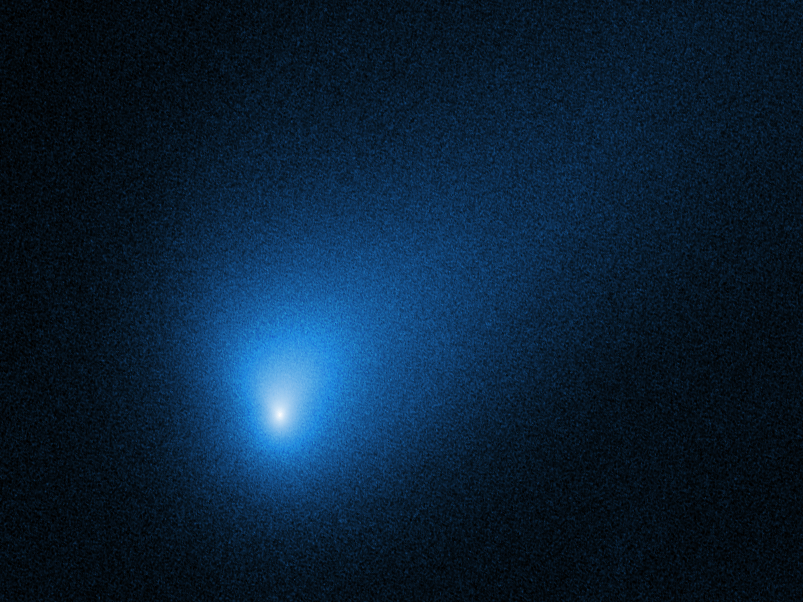FYI, glad to see the Wikipedia report cited dfjchem721

. 2I/Borisov has spectral image too, similar to comets already observed and documented in our solar system. "A preliminary (low-resolution) visible spectrum of 2I/Borisov was similar to typical
Oort Cloud comets.
[29][30] Its
color indexes also resemble the Solar System's long period comets.
[6]"
FYI, 2I means the 2nd interstellar comet observed now, I for interstellar like 1I/2017_U1, 'Oumuamua.
2I/Borisov has a fuzzy, coma shape too. Very common optical observation of comets using telescopes. My stargazing log records 52 comet sightings I made going back to April 1997 and April 1996, Hale-Bopp and Hyakutake. The most recent comet I observed is C/2019 Y4 (Atlas) on 30-March-2020 using my 10-inch Newtonian. From my stargazing log -
"Observed 2000-2200 EDT. Sunset 1929 EDT. I was able to view the comet again tonight but this time using the XT10i telescope. Very good views using 35-mm PO, 32-mm plossl, and 14-mm Delos eyepieces. Early in the evening I used the 35-mm PO and viewed Venus. Brilliant nearly half-moon shape, poked me in the eye

This was a lovely early spring evening outdoors. I observed 3 polar orbiting satellites while I viewed the comet. 2 with unaided eyes, one passing through Auriga about as bright as Capella, the other passed across the FOV while I viewed the fuzzy coma of the comet. Not very bright but more distinct brighter core at 86x using the 14-mm Delos. Plenty of stars visible in the FOV with the comet too and using the 35-mm PO, I could see HIP40215 star and the comet in same FOV near 34/35x and 1.8-degree true FOV. The comet and star a bit more than 1-degree apart in angular separation near 2030 EDT or 0030 UT. While I observed in the east pasture, the waxing crescent Moon lit up the fields, I was bathed in moonlight. Very ethereal observing like this. Venus below the Pleiades was quite a sight in western sky tonight. Orion out and Leo."
I will stay the course charted by astronomy that 2I/Borisov is indeed a comet and not aliens visiting our solar system, plotting an invasion

--Rod




